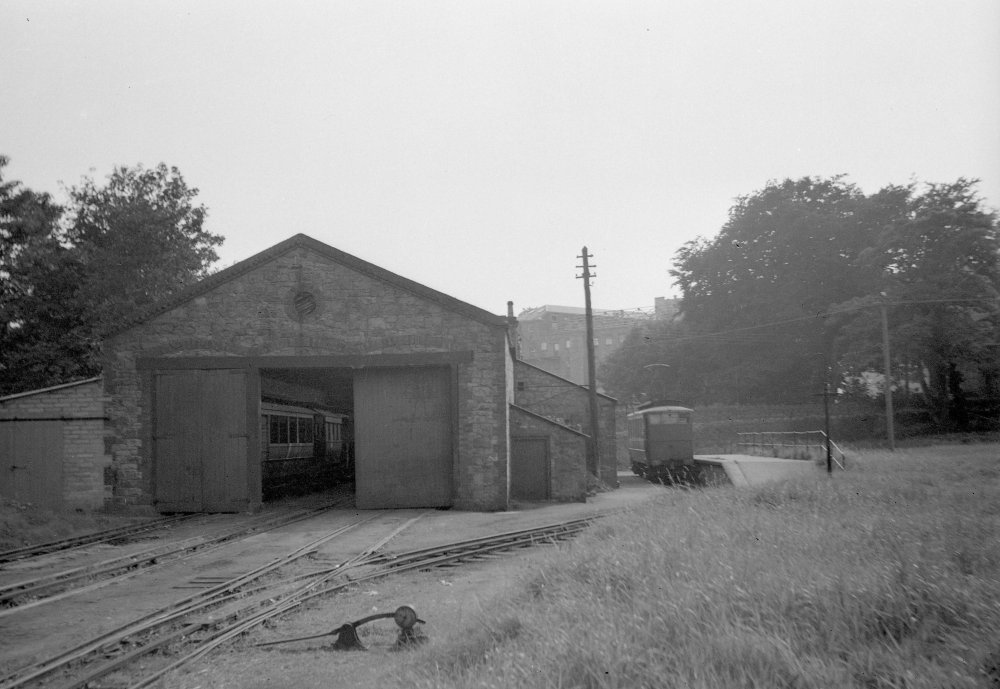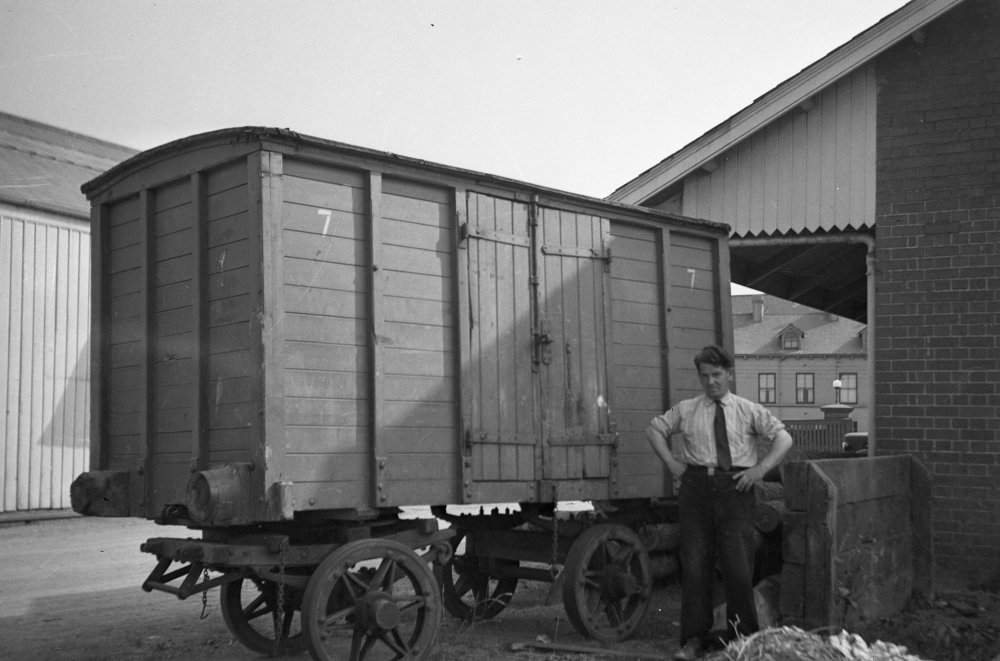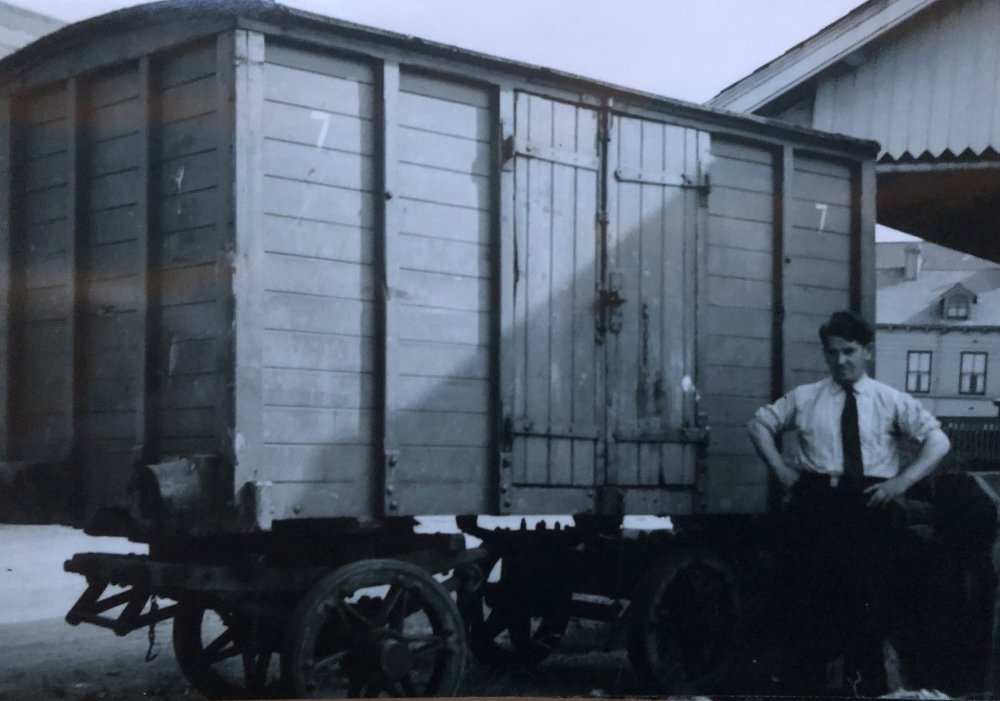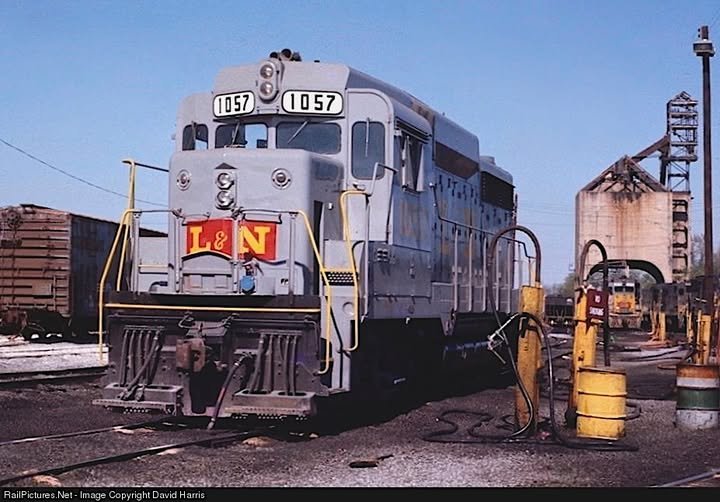-
Posts
15,870 -
Joined
-
Last visited
-
Days Won
393
Content Type
Profiles
Forums
Events
Gallery
Everything posted by jhb171achill
-
I often wonder why “artificial intelligence” isn’t called “artificial crassness”!
-
Tis a statement of truth!
-
I’ve a notion there’s another of one of the trams - will delve.
-
British locos and stock that can be disguised as Irish
jhb171achill replied to Westcorkrailway's topic in Irish Models
So easy now - plasticard sheet! -
He visited the line not long before it closed. It clearly looks a bit woebegone already. None of these have been published before.
-
"Voiding the Warranty" - Mol's experiments in 21mm gauge
jhb171achill replied to Mol_PMB's topic in Irish Models
Green was used here too. Certainly, several of the canal companies used it, though they used red too. Quite possible that any given building had both at different times. -
British locos and stock that can be disguised as Irish
jhb171achill replied to Westcorkrailway's topic in Irish Models
Any idea when? I’d very much like to see that! -
You've my support on that! Extremely amateurish thing.
-
I’ll fish them out when I’m home this evening!
-
The picture I posted is one of several that Senior took on his one and only visit to the line in the 1940s. They were designed to run on the road too!
-
A device that operates customer trains carrying customers, on a rail line between train stations…..!
-
Irish Railway News ‘Enterprise Watch’
jhb171achill replied to IrishTrainScenes's topic in General Chat
207 "Boyne" & 10 bogies on today's 12:00, but the AEC railcars start next week. And then I woke up................. -
Which cab is Oliver in?
-
The reason is that it's 4 fut 8 1/2 narra gauge, and it's 5 fut 3 at Portydown.....
-
Yes, I've "interrailed" a good l;ot on the past - plus, when in Switzerland, where a kitkat costs the price of an average family car in southside Dublin, there's a Swiss pass you can get, only avilable to us "furriners"; my sister (and her family), as a resident of Switzerland for over 40 years, isn't eligible!
-
I travelled in some sort of thing like that in Switzerland many years ago. Unusually for Switzerland, it was filthy inside and full of litter - you can usually eat your dinner off any surface in a Swiss train! But, naturally, it was bang on TIME!
-
Very neat work indeed.
-
“The Irish Corridor” an Irish Train game
jhb171achill replied to Westcorkrailway's topic in General Chat
Was thinking that. Why would anyone object to its existence? To me, while my computer literacy wouldn't even begin to go there, for someone living in a small apartment with no room even for a mini-layout, and perhaps not the budget to buy high-end models, this would seem to me to be ideal; my teen self would probably be all into it. (But that was half a century ago...............................!!) -
“The Irish Corridor” an Irish Train game
jhb171achill replied to Westcorkrailway's topic in General Chat
The livery is 100%, though in CIE days the 500s were fairly quickly painted lined green. -
Standard CIE green, still on it in Cultra, but with incorrect GS initials (put on by Cultra) instead of a flying snail. It’s typical “Irish preservation inaccuracy”. Cultra and the RPSI have both been repeat offenders. Correct liveries on preservation here are all too often either not properly researched, or “anything will do, we’re not bothered”!
-
Surprisingly, few newspaper images beyond the very recent past seem to have survived in original form. Plus, newsprint photos of the past, in print form (as in many of Colm's) were printed in an extremely low quality form, which was all that this medium was capable of back then - today, they are virtually un-lookable-at!
-
Absolutely fascinating stuff! I just wish Colm had managed to get the negatives, or at least decent prints, of all the (now very historically important) photos he took or collected. The frustrating thing with his material has always been the awful quality of the images, even in his books - it is hard to imagine how they could be any worse! But it's as well he recorded something, and we owe him a great debt of gratitude for this.
-
I'm involved in a facebook forum which has recently hit 100,000+ members. Even with that size it'll go for a while without bots and spammers, but then there will be a spate of them, and all three admins are busy for a day or two zapping them. Most we zap are far-right political activists, some claiming to be Irish, but the vast, vast majority of whom seem to emanate from the USA (extremist trump supporters, extremists racists and religious cranks) and the UK (tommy robinson / racist types). Some are identifiable straight away and don't get in. Others appear to answer all the entry questions properly and have good reason for entering, then start their nonsense. So, out comes the Zapper! Tis the world we live in..............! Gawd forbid, we'll be getting people here who aren't railway enthusiasts next! Horror of horrors!
.png.c363cdf5c3fb7955cd92a55eb6dbbae0.png)



.thumb.jpg.cdfd332903474d7564227acf67afa3bc.jpg)
.thumb.jpg.f6d3f66ee1053323dae7bea47c5b1b22.jpg)






